Recoleta cemetery is the #1 attraction of Buenos Aires (outside of the mandatory steak and tango experiences). For now, it remains free to the public, although we were told a 100 peso fee will soon be implemented to help fund cemetery maintenance.
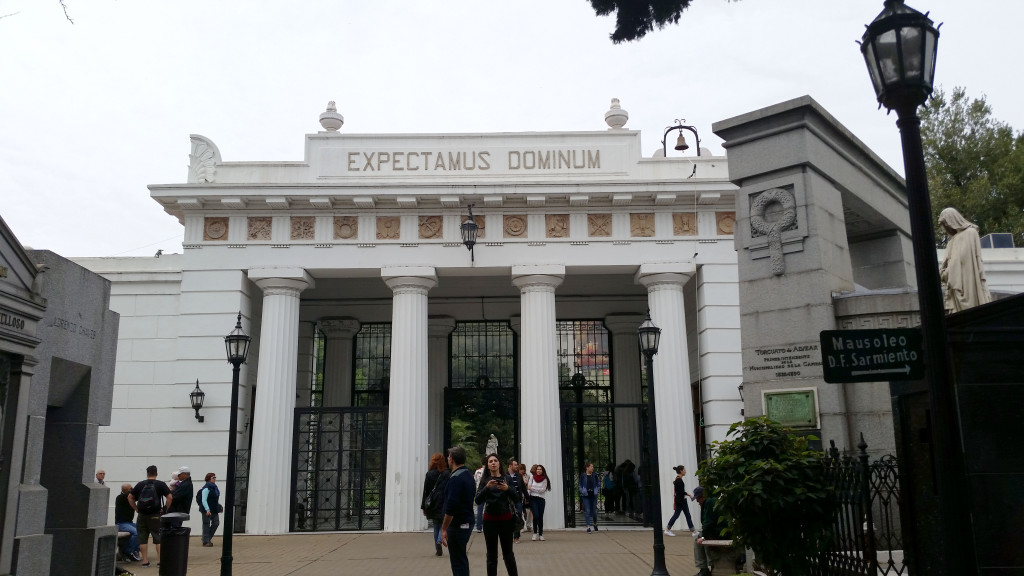
On Tuesdays and Thursdays there’s a free guided tour in English that lasts about an hour. Our guide introduced us to the cemetery, explaining that the area of Recoleta was named after the Recoleto monks, a Franciscan order and the land was theirs until governor General Martín Rodríguez made it a cemetery in 1822.
Back in the day, the cemetery was on the outskirts of the city (when the center of BA was in the south). This area, so close to el Rio de Plata, was prone to flooding and was not very desirable. Still, the wealthy in the area began to build up the cemetery with mausoleums and extravagant grave sites, often imported from Europe.
Entombed bodies are at least 5 meters deep and the smallest grave/mausoleum can hold 4 bodies. Once purchased, a plot is yours forever. Or, until sold by remaining family members. It’s an active cemetery, with funeral services and burials still common occurrences and families still selling their plots/land. Our guide said the smallest of plots can go for $30,000 USD. If a plot is sold, the bodies currently there are either moved to plots/cemeteries elsewhere or cremated. New owners can either use the mausoleum as it is, or rebuild it to their liking.


Our guide took us to see some of the old, new, and most beautiful (and notable) graves Recoleta holds. One of the oldest plots (above) belongs to wife of Gen. Jose de San Martin, leader of the Argentinian/Chilean/Peruvian independence movement(s). The memorial in honor of San Martin’s parents sits to its left.
Also notable for his contributions to the Argentine national security and having a monumental memorial is Admiral William Brown, the Irish-Argentine founder of the nation’s navy. The bronze urn and decorative trimming are made from melted-down bronze from cannons on his battleship.

Behind Admiral Brown’s memorial was another that sorta looks like a pile of rocks. Our guide explained that it is the tomb of General Tomas Guido, another leader in the fight for independence, whose wish was to be buried in the Andes. Rather than leaving his body in the Andes, they brought the Andes to him, building this tomb from mountain rocks to honor his wishes (I’m assuming Andean mountain rocks).

There were so many, many astounding grave sites everywhere you turn. Statues of marble/bronze/stone, stained glass windows, golden mosaics and more adorn these final resting places.

Though many were famous in life for their political achievements, others are perhaps more famous in death for their beautiful graves.
The plot below is well-known for its distinctive gothic style in a city of gaudy classical memorials. I think it was my favorite of the cemetery.
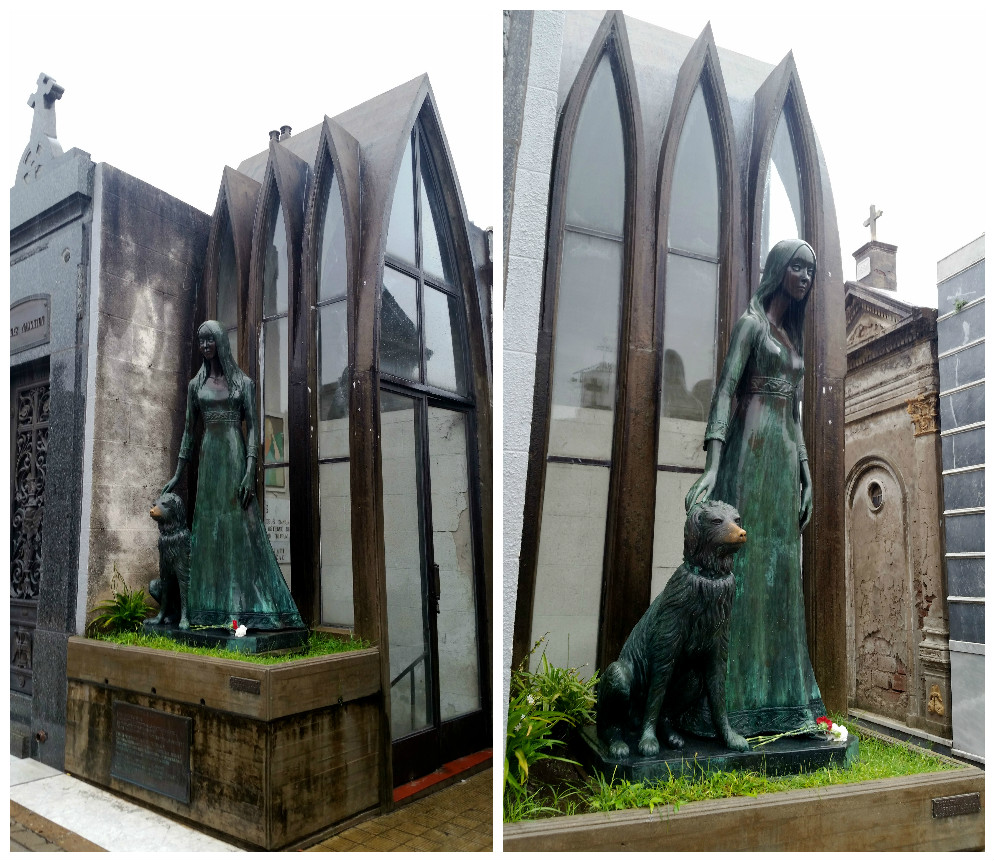

Rufina Cambares’ tomb is pretty famous for its beauty as well as the legend that grew after her death. The day after her burial her coffin had been moved. Many say this is because Rufina hadn’t really died but was in a coma, and woke up after her entombment, stuck. As if to right a wrong, her mother installed a clear glass window to ensure this would never happen again. Our guide ensured us this story is untrue and that rather than a tale of a coma-gone-wrong, this is an age-old tale of grave robbery. Either way, the marble sculpting and art-deco style are an elegant monument to Rufina.
Bartolomé Mitre is considered an important Argentine historical figure, having served as president, having founded La Nación newspaper, and authoring historical works covering Argentina’s independence and key national figures. The figures are personifications of “el Deber” (duty) on the left, “la Libertad” (liberty) in the middle, and “la Justicia” (justice) on the right.
Not all tombs are of well-known figures of Argentine history. Below is an unmarked tomb, likely purchased from another family/owner but with all identifying plaques removed.
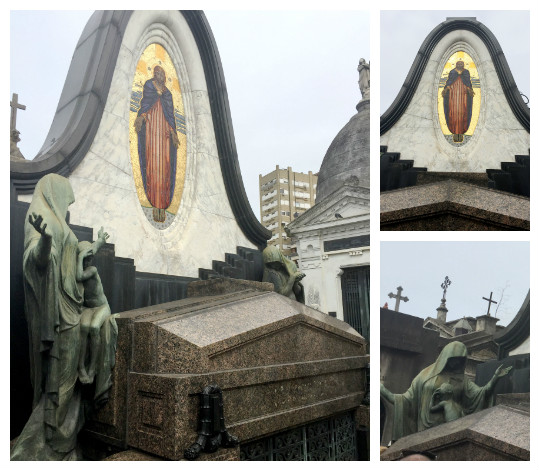
Lots of planning went into Recoleta Cemetery, but I couldn’t see any street names or path numbers, making it a bit tricky to find a particular grave. Thankfully the cemetery isn’t big enough to get lost in for long; it’s smaller than an average city block. Through the tour and the exploring we did there was only one gravesite that had signs pointing to it (and it was NOT Evita’s!). The only signs in the cemetery providing direction were for Domingo Sarmiento, another former Argentine president and author who championed democracy and wrote Facundo, a key text in the cannon of Latin American literature.

Though Sarmiento’s grave was the only with signs to help visitors locate it, the most famous grave in Recoleta arguably belongs to Evita. Her grave site is not very easy to find on your own, though usually there is a group of visitors on their way to see it, on their way back to the entrance having just seen it, or crowded in the narrow hallway to look at all the plaques and flowers commemorating her deeds and popularity.
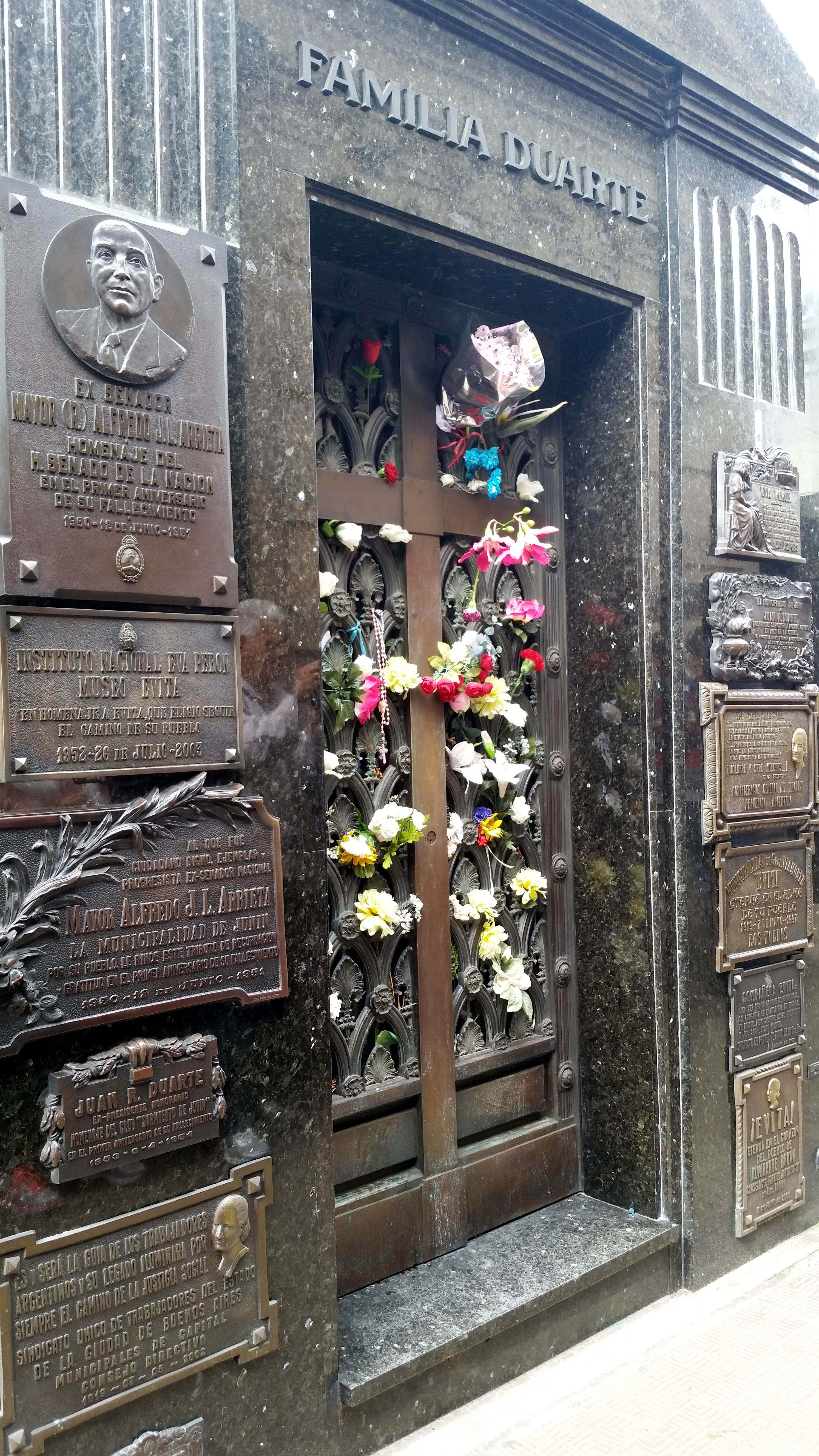
Here’s the 90-second version of Eva’s (“Evita’s”) biography, as our guide summarized: Evita came from a small town to BA to pursue her acting career and married a guy named Juan Perón. A year later Perón became president and she was suddenly the first lady. Can you imagine coming from a regular working-class background to being thrust into the limelight and high society? She became the country’s sweetheart, driving legislation for women’s suffrage to fulfillment and continually striving to better the lives of the working class.
Evita died of cancer and the country mourned for two full weeks, during which, the entirety of Buenos Aires’ flower shops ran out of flowers (they shipped them in from as far as Chile!). To this day, there is still no shortage of flowers for Evita.
To all of the inhabitants of Recoleta Cemetery: May you rest in peace.
P.S. The most common word in the cemetery (according to me) was pax. Latin for peace, it adorned many, if not most of the graves in all caps or in symbol form!
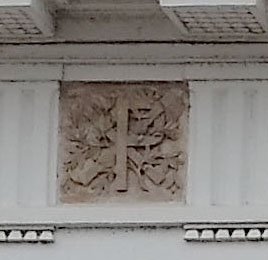
P.P.S. As an added bonus here’s another view of the cemetery from next door + above!
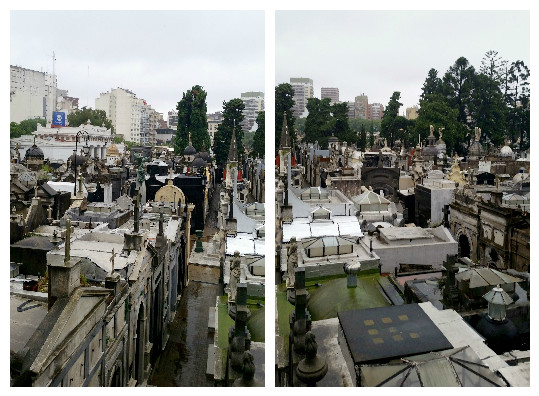
P.P.P.S. If you’re hankering for more, I suggest checking out www.recoletacemetery.com. The Recoleta Cemetery is filled with rumors and ghost stories too…this blog is great for getting up close and personal with some of the notable persons, their rumored stories, and whether or not there is truth to be found.

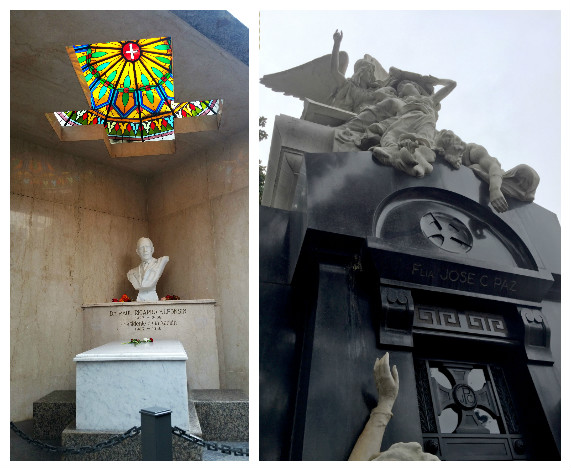
Lots of history there I am sure is scary for little folks.